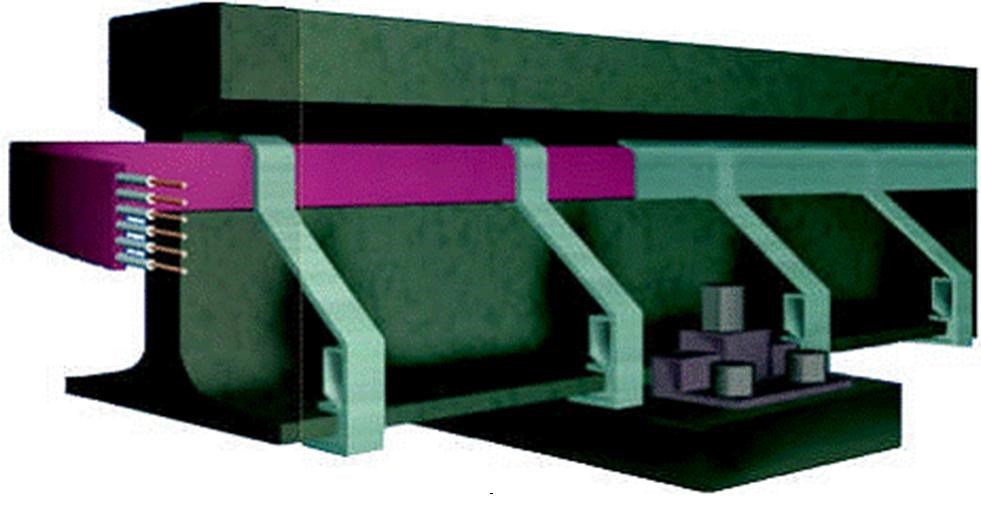Thursday 11 Nov 2010
RAIL HEATERS AIM TO STOP ICE IN ITS TRACKS
- Region & Route:
- | Southern
More than 16,000m of specialist heating strips have been installed onto the third rail power system across Kent as part of a county-wide trial to improve reliability of train services during harsh winter weather conditions.
Ice forming on the conductor rail, which is used to provide electricity to power the trains, is one of the biggest causes of disruption in the region during winter weather. A layer of ice on the top of the rail prevents or disrupts power being drawn by the train often resulting in the train being stranded. By the end of the year, heating elements will have been installed at 42 key locations across the Kent route primarily at points where trains come to a halt.
Dave Ward, Network Rail’s route director for Kent, said: “We are pioneering this new technology in Britain to further improve the reliability of train services during harsh winter weather conditions. We have analysed weather patterns over the last ten years to identify the most vulnerable areas, and it is these places we are concentrating the trial of the heating strips.
“Last winter was the most severe for thirty years. Although the railway coped relatively well compared to other forms of transport, we have used the experience to try and make the railway more robust so we can deliver a better and more reliable for passengers.”
The conductor rail heating is one of a number of initiatives being undertaken by the rail industry to improve operations during the winter months.
To complement this initiative, train operator, Southeastern, has launched on its website a new online table showing at-a-glance how train services on all 12 routes are operating at any given moment. The tool shows either ‘good service’, ‘minor disruption’ or ‘major disruption’ and sits alongside an interactive map. Southeastern has also published a contingency timetable to provide passengers with an idea of what services could look like on the rare occasions it needs to be implemented. Other upgrades have also been made to the website and all drivers and conductors have been issued with Blackberrys to help improve information to passengers. For more details see: www.southeasternrailway.co.uk/news .
Network Rail has also been working with graduates and research staff teams at the University of Birmingham to assess the benefit of anti-icing and de-icing products. The findings will feed into other work Network Rail is doing to combat the problems caused by extreme weather. The company has also worked with specialist weather experts with the aim of getting more accurate forecasts and conditions on the rails.
Similar projects are planned for other parts of the railway in the south east which use the third rail power system, particularly in East and West Sussex, Surrey and Hampshire.
Notes to editors
Stations and points along the following stretches of track were identified for the installation of heating strips:
- Hastings to Grove Park
- Ashford to Maidstone
- Tonbridge to Orpington
The new initiatives will complement Network Rail established winter contingency plans during harsh weather conditions, which will continue to be delivered. When required, maintenance teams will be working night and day to check hundreds of points at key junctions to prevent equipment from freezing. A fleet of specialist anti-icing trains will also operate across the affected areas, spraying heated anti-freeze onto the rails.
The University of Birmingham is one institution which collaborates with Network Rail. The university has a multi-disciplinary centre for railway research and education which offers offer both undergraduates and masters students practical experience of working collaboratively with industry during their studies. As part of their final year project, or a summer placement, students carried out tests which involved building a cold room and running a shoe along a circular rail spinning at up to 50mph to simulate real conditions. New anti-ice fluids and sleet brushes have been tested.
Contact information
Passengers / community members
Network Rail national helpline
03457 11 41 41
Latest travel advice
Please visit National Rail Enquiries
Journalists
Network Rail press office - South East route
020 3357 7969
southeastroutecomms@networkrail.co.uk
About Network Rail
We own, operate and develop Britain's railway infrastructure; that's 20,000 miles of track, 30,000 bridges, tunnels and viaducts and the thousands of signals, level crossings and stations. We run 20 of the UK's largest stations while all the others, over 2,500, are run by the country's train operating companies.
Usually, there are almost five million journeys made in the UK and over 600 freight trains run on the network. People depend on Britain's railway for their daily commute, to visit friends and loved ones and to get them home safe every day. Our role is to deliver a safe and reliable railway, so we carefully manage and deliver thousands of projects every year that form part of the multi-billion pound Railway Upgrade Plan, to grow and expand the nation's railway network to respond to the tremendous growth and demand the railway has experienced - a doubling of passenger journeys over the past 20 years.
Follow us on Twitter: @networkrail
Visit our online newsroom: www.networkrailmediacentre.co.uk

